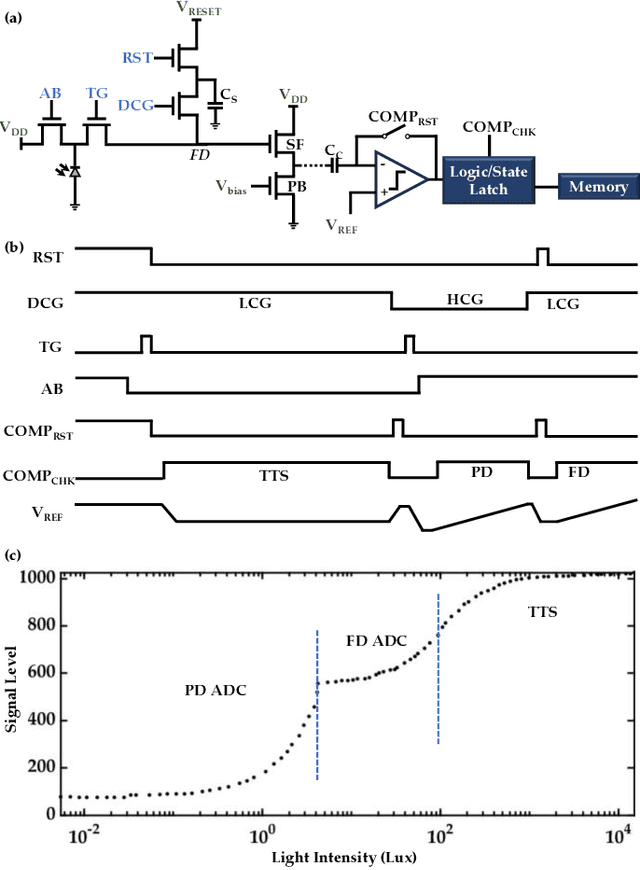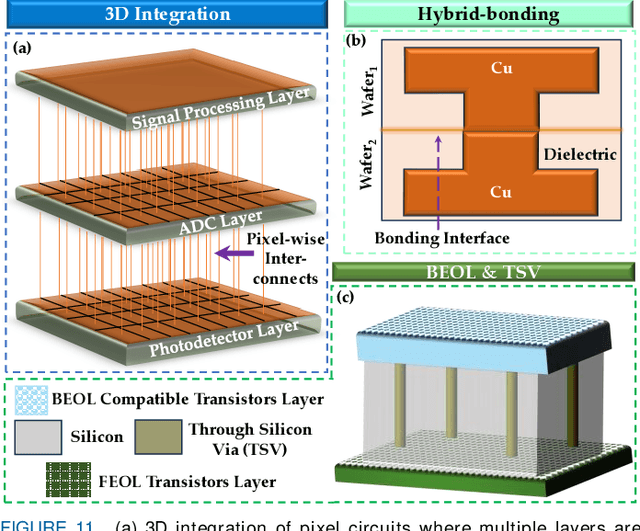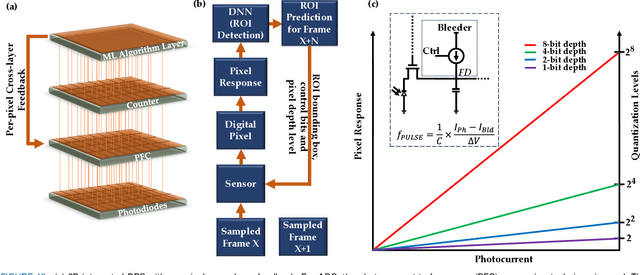Md Rahatul Islam Udoy
In-Pixel Foreground and Contrast Enhancement Circuits with Customizable Mapping
Oct 23, 2024Abstract:This paper presents an innovative in-pixel contrast enhancement circuit that performs image processing directly within the pixel circuit. The circuit can be tuned for different modes of operation. In foreground enhancement mode, it suppresses low-intensity background pixels to nearly zero, isolating the foreground for better object visibility. In contrast enhancement mode, it improves overall image contrast. The contrast enhancement function is customizable both during the design phase and in real-time, allowing the circuit to adapt to specific applications and varying lighting conditions. A model of the designed pixel circuit is developed and applied to a full pixel array, demonstrating significant improvements in image quality. Simulations performed in HSPICE show a nearly 6x increase in Michelson Contrast Ratio (CR) in the foreground enhancement mode. The simulation results indicate its potential for real-time, adaptive contrast enhancement across various imaging environments.
A Review on Digital Pixel Sensors
Feb 07, 2024



Abstract:Digital pixel sensor (DPS) has evolved as a pivotal component in modern imaging systems and has the potential to revolutionize various fields such as medical imaging, astronomy, surveillance, IoT devices, etc. Compared to analog pixel sensors, the DPS offers high speed and good image quality. However, the introduced intrinsic complexity within each pixel, primarily attributed to the accommodation of the ADC circuit, engenders a substantial increase in the pixel pitch. Unfortunately, such a pronounced escalation in pixel pitch drastically undermines the feasibility of achieving high-density integration, which is an obstacle that significantly narrows down the field of potential applications. Nonetheless, designing compact conversion circuits along with strategic integration of 3D architectural paradigms can be a potential remedy to the prevailing situation. This review article presents a comprehensive overview of the vast area of DPS technology. The operating principles, advantages, and challenges of different types of DPS circuits have been analyzed. We categorize the schemes into several categories based on ADC operation. A comparative study based on different performance metrics has also been showcased for a well-rounded understanding.
 Add to Chrome
Add to Chrome Add to Firefox
Add to Firefox Add to Edge
Add to Edge